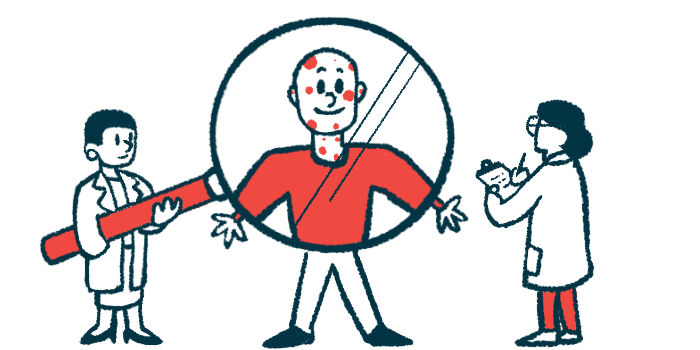Real-world Study Highlights Impact of CMT1A Symptoms
Fatigue, difficult walking, weakness in extremities have most effect

Weakness in the extremities, fatigue, and difficulty walking are typically the symptoms that affect people with Charcot–Marie–Tooth disease type 1A (CMT1A) the most, and many report substantial anxiety and/or depression, a study found.
“These data demonstrate the high unmet medical need in CMT1A caused by the symptoms’ burden are in line with previous natural history studies and provide more precise information for those following their disease progression, enabling more insightful conversations when meeting with their neurologists and caregivers,” Florian Thomas, MD, PhD, a professor at Hackensack University Medical Center and Hackensack Meridian School of Medicine, New Jersey said in a press release.
The study, “Patient-Reported Symptom Burden of Charcot–Marie–Tooth Disease Type 1A: Findings From an Observational Digital Lifestyle Study,” was published in the Journal of Clinical Neuromuscular Disease.
“[The data] also illustrate the need for education of patients and providers with the goal of empowering patients to advocate for their healthcare needs and for providers to be cognizant of the need for comprehensive interprofessional care over the entire disease course that connects patients to other professionals including rehab specialists, foot and ankle surgeons and health psychologists,” Thomas said.
CMT1A is the most common Charcot-Marie-Tooth disease subtype, affecting about one in every 5,000 people. Understanding how it affects patients’ daily lives is important for designing treatment interventions, although there is little published data about the experiences of people with CMT1A.
The study reported data collected as part of CMT&Me (NCT03782883), an entirely app-based study sponsored by Vitaccess and launched in 2018 to collect real-world information about the experiences of people with CMT.
It included data for 937 people with CMT1A who responded to surveys between 2018 and 2021. From available data, the mean patient age was 45 and 70.8% were female. More than half lived in the U.S. or U.K. The study also included people in Italy, France, Spain, and Germany.
The mean age when the patients first noticed symptoms of CMT1A was 17. On average, patients sought medical attention about eight years after the initial onset of symptoms and were formally diagnosed with the disease about a decade after they appeared.
Most (86.5%) were being treated with physical therapy, but occupational and massage therapy were also used. The most commonly prescribed medications included pain-reducing therapies and antidepressants, and many patients used orthotic devices such as leg braces or mobility aids such as a cane to help get around.
Symptom with the most impact
The participants were asked to identify the single most impactful symptom of CMT in their life. The symptom rated most impactful among all respondents was weakness in the hands or fingers. Other symptoms commonly rated as highly impactful included difficulty walking, weakness in the feet and legs, problems with balance, and fatigue.
Based on a standardized measure called EQ-5D-5L, almost 60% of patients had at least moderate mobility problems. Standardized pain scores were generally mild or moderate in most, though many reported substantial interference from pain from day to day. Fatigue scores indicated high severity and nearly three-quarters reported cramping at least once a week.
“Although the results of the most frequently reported symptoms reveal those of greatest importance to participants, it should not be inferred that the less frequently reported symptoms do not affect participants, and as such, any given result in isolation should be extrapolated with caution,” the researchers wrote. “Pain, for example, was only the eighth highest ranked symptom of importance, yet median PRO [patient-reported outcome] instrument scores indicate that patients experience both pain intensity and interference.”
Symptom burden was “mostly similar across countries,” the researchers wrote, though some differences were noted. For example, patients in the U.K. or Germany were more likely to rate fatigue as a highly impactful symptom than were those in Spain.
The most common comorbidities, or co-occurring health conditions, were mental health disorders: anxiety in 39.3% of patients and depression in 37.9%. Other common comorbidities included gastrointestinal problems (27.2%), breathing issues (20.1%), and thyroid problems (15.9%).
The researchers noted that the rate of mental health problems in these patients is higher than in the general population, though similar to what is seen among people with other neurological disorders such as multiple sclerosis.
“It is apparent that there remains a high unmet need in CMT1A caused by the burden on patients,” the researchers concluded, calling for more efforts to support those affected by the disease.







